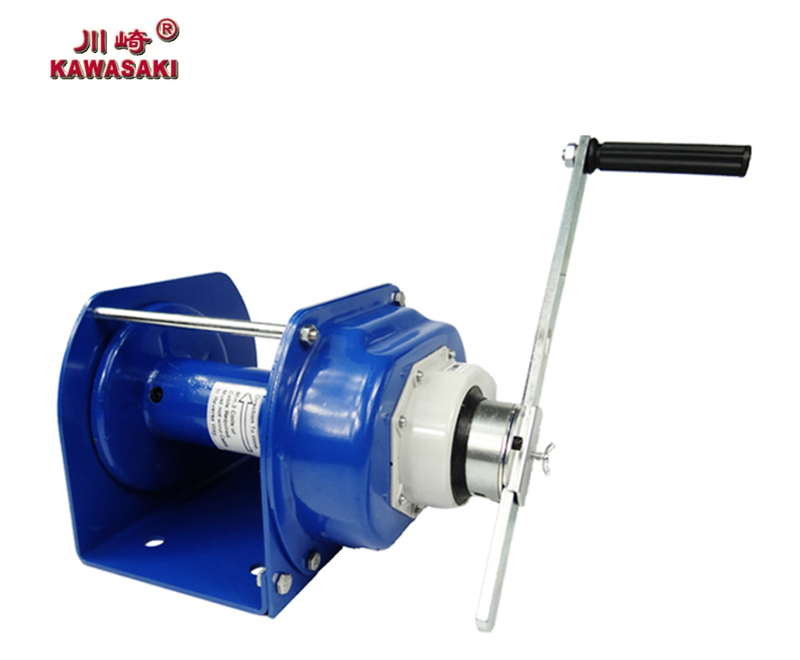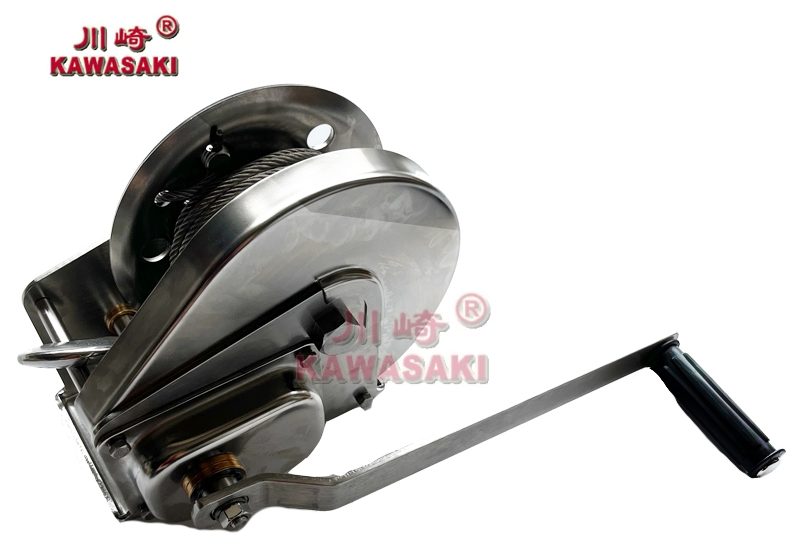Definition and Purpose of a Hand Winch
What is a Hand Winch?
A hand winch is a mechanical device commonly used for lifting, pulling, or positioning heavy loads with ease. It operates using a hand-crank mechanism that allows the user to apply manual force to wind a cable or rope around a drum, effectively creating mechanical advantage. Unlike electric winches which require power sources, hand winches are manually operated, making them ideal for remote locations or situations where power is unavailable. The primary purpose of a hand winch is to simplify the process of moving heavy objects by providing a reliable and controlled means of force application.
Common Uses of Hand Winches
Hand winches find applications in various fields and industries due to their versatility and simplicity. Some common uses include:
- Towing and Recovery:Used in automotive applications for pulling vehicles onto trailers or out of difficult terrain.
- Boating and Marine:Employed on boats to raise and lower sails, lift anchors, or deploy watercraft from trailers.
- Construction Sites:Utilized for hoisting materials and equipment to different levels of construction projects.
- Logging and Forestry:Applied in hauling logs and other heavy wooden materials in remote wooded areas where machinery can’t reach.
These diverse applications highlight the utility of hand winches across multiple sectors, emphasizing their importance in both professional and recreational activities.
Components of a Hand Winch
Understanding the key components of a hand winch is essential for appreciating its function and effective use. The main components include:
- Drum:A cylindrical spool where the cable or rope is wound. It is integral for storing and dispensing the line efficiently.
- Handle:Attached to the drum or gear mechanism, the handle is used to crank the winch, enabling the user to apply manual force.
- Gear Mechanism:Provides the necessary mechanical advantage by transferring the rotational force from the handle to the drum.
- Brake System:Ensures controlled operation by preventing the load from slipping or unwinding unintentionally.
- Cable/Rope:The line used to connect and transfer the force from the winch to the load. It needs to be strong and durable to handle the specified loads.
Types of Hand Winches

Manual vs. Automated Hand Winches
There are two primary types of hand winches: manual and automated.
- Manual Hand Winches:These are the traditional, manually-operated devices that rely purely on human effort to turn the handle and generate the lifting or pulling force. They are simpler and more portable, making them ideal for a broad range of applications where power sources are unavailable or impractical.
- Automated Hand Winches:Although less common, some hand winches incorporate electric or hydraulic assistance to reduce the manual effort required. These are particularly useful for repetitive tasks or heavier loads where manual operation would be too labor-intensive. Automated winches offer convenience but require external power sources.
Key Features to Consider
Load Capacity
The load capacity of a hand winch is a critical feature to consider, indicating the maximum weight it can safely handle. It is essential to choose a winch with a capacity that exceeds the weight of the intended load to ensure safety and operational efficiency. Overloading a hand winch can lead to equipment failure and pose significant risks to both users and the materials being moved.
Material and Build Quality
The durability and reliability of a hand winch are largely determined by the materials and build quality. High-quality winches are typically made from robust metals such as steel or stainless steel, which offer excellent resistance to wear and environmental factors. Additionally, corrosion-resistant coatings are crucial, especially for winches used in marine or outdoor environments, to prevent rust and extend their service life.
Gear Mechanism
The gear mechanism is another vital feature, affecting both the winch’s performance and ease of use. There are different types of gear systems incorporated into hand winches.
Single-Speed Gear Systems
Single-speed gear systems provide a straightforward and hassle-free operation suitable for general-purpose use. They offer a consistent gear ratio, which means that the speed of cranking and the mechanical advantage remain fixed. These systems are simpler to maintain and are ideal for less demanding applications where variable speed control is unnecessary.
Dual-Speed Gear Systems
Dual-speed gear systems offer more versatility by providing two different gear ratios, allowing users to switch between high-speed, low-torque modes and low-speed, high-torque modes. This feature is beneficial in scenarios where both rapid line retrieval and precise, powerful lifting or pulling are required. The ability to adjust the gear ratio enhances the winch’s adaptability to various tasks, making it a preferred choice for more complex or heavy-duty applications.

Safety Features
Automatic Brakes
Automatic brakes are an essential safety feature in hand winches, ensuring the load remains secure during operation. These brakes engage automatically when the handle is released, preventing the drum from unwinding and the load from slipping. This feature is especially crucial when dealing with heavy or awkwardly shaped loads, as it minimizes the risk of accidental release and enhances overall control and safety for the operator.
Handle and Grip Design
The handle and grip design of a hand winch significantly influence user comfort and control. Ergonomically designed handles reduce hand fatigue and provide a better grip, allowing for more efficient and safer operation. Some handles are equipped with anti-slip materials, ensuring that even in wet or greasy conditions, the user’s grip remains firm. A well-designed handle not only enhances performance but also contributes to the long-term durability of the winch by reducing wear and tear on the operator.
Installation and Usage Guidelines
How to Install a Hand Winch Properly
Proper installation of a hand winch is paramount to ensuring safe and efficient operation. Begin by selecting a sturdy and stable mounting surface that can bear the loads applied during winching. Secure the winch using appropriate bolts and brackets, ensuring it is tightly fastened to prevent any wobbling or movement. It is also essential to align the winch axis with the direction of the load to avoid unnecessary strain on the cable and winch components. Finally, inspect all connections and mounting points to confirm that they are secure before use.
Steps for Safe Operation
Pre-Operation Checklist
Before using a hand winch, conduct a thorough pre-operation checklist to ensure safety and functionality. Check the cable or rope for any signs of wear, fraying, or damage. Inspect the drum, handle, and brake system for any abnormalities or signs of wear. Ensure that all mounting bolts and brackets are tight and secure. Verify the load capacity of the winch against the weight of the intended load to prevent overloading. Lastly, make sure the area around the winch is clear of obstacles and bystanders to maintain a safe working environment.
Step-by-Step Usage Instructions
Operating a hand winch safely follows a series of orderly steps. First, securely attach the winch’s cable hook to the load, ensuring it is fastened to a sturdy and appropriate anchoring point. Begin cranking the handle in a steady, controlled manner, maintaining awareness of the load and winch at all times. Utilize the brake system to hold the load in position if adjustments or pauses are necessary. Continue cranking until the load has reached its desired position, ensuring all movements are smooth and deliberate. Release the handle slowly and engage the automatic brake to keep the load in place once the operation is complete.

Maintenance and Troubleshooting Tips
Regular Maintenance Practices
Regular maintenance is crucial for maximizing the lifespan and performance of a hand winch. Clean the winch after each use to remove dirt, debris, and moisture that may cause corrosion. Lubricate moving parts, including the gear mechanism and handle joints, to ensure smooth operation. Regularly inspect the cable or rope for any signs of wear or damage and replace it if necessary. Additionally, check the brake system for functionality and efficiency, and tighten any loose bolts or screws. Consistent maintenance practices help prevent unexpected failures and extend the overall service life of the winch.
Common Issues and How to Fix Them
Several common issues may arise during the use of a hand winch. If the winch handle is difficult to turn, it may be due to a lack of lubrication or a misaligned gear system. Applying a suitable lubricant to the moving parts and realigning the gears should resolve this issue. If the cable is fraying or showing signs of wear, replace it immediately to prevent breakage during use. In the event of brake failure, inspect the brake components for wear or damage, and replace any compromised parts. Regular maintenance and prompt addressing of issues can keep the winch functioning safely and efficiently.
Buying Guide: Factors to Consider
Budget Considerations
When purchasing a hand winch, budget is a significant factor to consider. Determine the maximum amount you are willing to spend and look for models that offer the best value within that range. While higher-priced winches often come with advanced features and superior materials, there are also cost-effective options that provide reliable performance for less demanding applications. Balancing cost with the necessary features and quality can help ensure a worthwhile investment.
Intended Application Environment
The environment in which the hand winch will be used plays a critical role in the selection process. For marine or outdoor use, opt for winches with corrosion-resistant materials and weatherproof coatings to prevent rust and degradation. For heavy-duty industrial applications, choose winches with higher load capacities and robust construction. Understanding the specific conditions and requirements of the intended application will help in selecting a winch that can withstand and perform optimally in those settings.
Long-Term Durability
Investing in a hand winch with long-term durability ensures value and reliability over time. Look for models constructed with high-quality materials such as steel or stainless steel and those that come with corrosion-resistant finishes. Assess the manufacturer’s warranty and customer service reputation, as these can provide additional assurance regarding the product’s longevity. A durable hand winch not only provides consistent performance but also reduces the need for frequent replacements, making it a cost-effective choice in the long run.
HANGZHOU APOLLO LIFTING EQUIPMENT CO., LTD.
The company’s approach to hand winch design is a blend of traditional craftsmanship and modern technology. APOLLO’s winches are constructed to withstand the rigors of heavy use while maintaining user safety and comfort. The meticulous attention to detail is evident in the ergonomic handles, robust frames, and smooth operation that characterize their equipment.
APOLLO‘s commitment to quality extends beyond the mere assembly of components. It is reflected in the rigorous testing and quality assurance processes that each hand winch undergoes, guaranteeing that they meet the highest standards of durability and performance. This dedication to excellence ensures that APOLLO’s hand winches are not only reliable but also integral to the efficiency and success of countless industrial operations.
Incorporating APOLLO’s hand winch mechanisms into one’s toolkit is not just a choice but an investment in a legacy of reliability and innovation. As industry professionals engage with these mechanisms, they are wielding instruments forged from the very essence of APOLLO’s engineering prowess and visionary outlook.
Conclusion: Making an Informed Decision
Selecting the right hand winch involves careful consideration of various factors, including load capacity, material quality, gear mechanism, safety features, and intended application environment. By understanding the key components and functionalities of hand winches, as well as adhering to proper installation and maintenance practices, users can ensure safe and efficient operation. Reviewing popular brands and models, along with budget and durability considerations, further aids in making an informed decision. Whether for professional or recreational use, a well-chosen hand winch can significantly ease the process of lifting, pulling, and positioning heavy loads, offering both practicality and reliability in diverse applications.


